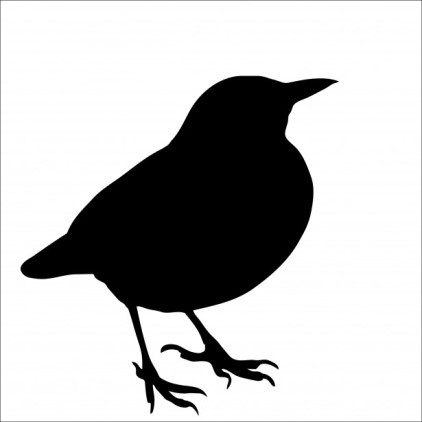People generally feed wildlife for one or both of two reasons: to bring wildlife to their homes so they can see and enjoy them, and/or to offer animals a little assistance, perhaps to make up for the habitat loss that our own housing developments cause. Both of these are well intentioned, and from my perspective anyway, “legitimate” reasons for feeding wildlife. However, there are also negative consequences that can result from feeding wildlife, both for the feeders and the wildlife, and anyone who truly cares about the health and safety of the wild animals they want to attract should carefully consider the following points when deciding who, when, where, and how they provide food and/or water.
Disease Transmission
Feeding or providing water can be more detrimental that helpful if these resources are presented in such a way as to promote the growth and spread of disease. Water, a premium resource for all wildlife in the Flagstaff area, especially in the summer can be deadly if it is not kept clean and fresh. Animals bathing and excreting in the water you provide will quickly contaminate it with bacteria and other potential disease vectors. The heat of the day then creates ideal conditions for these organisms to multiply and to infect other visitors.
This same principle applies to feeding wildlife. If you feed birds on the ground, rotate the areas where you spread seed so that feces don’t build up in feeding areas. Use common sense to address and prevent this very serious issue.
Similarly, if you feed hummingbirds nectar from a hanging bottle, make sure you keep the container scrupulously clean or the sugar solution may become a deadly bacteria potion. (Remember to use vinegar, not soap, to clean hummingbird feeders, and rinse well!)
Safety
Remember that attracting animals, especially birds, into areas where they are visible to us, also makes them more visible, and therefore more vulnerable, to predators. Set up feeders and feeding areas so that they afford some cover and escape routes for the animals you are attracting. Also keep them “certain” distances from windows, or apply XXX to the windows so birds do not fly into them. These features should increase the number of birds that come to your feeders since they will feel less vulnerable.
If you have cats, or other predacious pets, keep them inside where they cannot access the areas you have created to attract animals. This point can’t be overemphasized since XXX birds are killed each year by cats that don’t even need a wild food supply.
Consider also the appropriateness of attracting certain animals into your yard. You may want to have deer, elk, javelina, or coyotes at your waterhole, but if your neighbors have carefully planted gardens and small pets, you are setting up a conflict that the wildlife will probably get the worst of in the end.
Attracting Exotics/Pests
Although your intention may be to attract and feed the native species that are the most negatively impacted from human encroachment and development, often the animals we end up attracting and benefitting are common alien or pest species (such as house sparrows, starlings and Eurasian collared doves) that are part of the problem for native wildlife. Or you may find you are attracting common species such as rock squirrels or skunks that are destructive to your home or landscaping.
The best way to avoid this problem is to identify beforehand who you want to attract, and then tailor the type of feed you put out and its presentation, for that species. For example, if you want to attract finches and grosbeaks, but don’t want house sparrows and jays, feed niger (more expensive, but a sure fire way to attract siskins and goldfinches) or sunflower seed (great for grosbeaks, chickadees and larger finches) in a cylindrical, hanging feeder. You may still get the odd house sparrow or dove at your feeder, but generally the finches, siskins, and grosbeaks are better adapted to eating these seeds and at accessing this type of feeder.
Probably the best, and certainly the most “ecologically correct” way of attracting and feeding native species is to landscape for them with plants that provide specific habitat (food and/or cover) requirements. Landscaping presents cover and food resources in a way that does not promote crowding and disease transmission the way artificial seed or nectar presentations usually do. It has the additional advantage of beautifying your yard!
It goes without saying that people should NEVER feed wildlife by hand. Though tempting, this only leads to familiarity, then aggressiveness to humans, and ultimately their removal/demise.
Summary
From a wildlife health perspective, there are valid pros and cons to feeding wildlife. The best any responsible wildlife provider can do is to be aware of the potential problems, and apply this understanding to their own location, species of interest, and resources. Think about who you want to attract and why. Develop a strategy to accomplish your goals and to reduce the potential negative side effects to wildlife. Watch and see who comes to your feeders and/or waters, and what they do. Are they your target species? Are they getting what they need? Are you attracting lots of unwanted species? If so, consider what can you do to exclude them and still provide for targeted species? How could you landscape your yard to provide food and cover to native species (including bats, butterflies and reptiles, as well as birds and mammals)? Once you start thinking in these terms be prepared to get hooked on an endlessly fascinating hobby!
